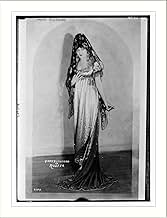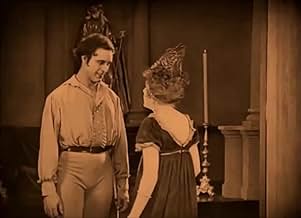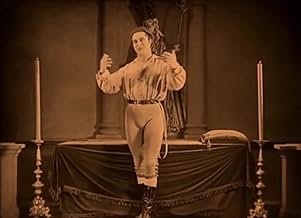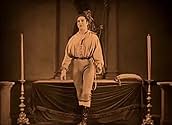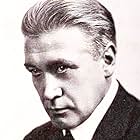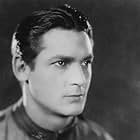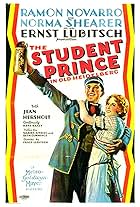Rosita, a peasant singer in Seville, captures the attention of the King.Rosita, a peasant singer in Seville, captures the attention of the King.Rosita, a peasant singer in Seville, captures the attention of the King.
- Awards
- 3 wins
Mathilde Comont
- Rosita's Mother
- (as Mme. Mathilde Comont)
George Bookasta
- Child Role
- (uncredited)
Mario Carillo
- Majordomo
- (uncredited)
Marcella Daly
- Undetermined Bit Role
- (uncredited)
Charles Farrell
- Undetermined Bit Role
- (uncredited)
Storyline
Did you know
- TriviaDespite its success, Mary Pickford demanded all copies of the films to be ruined.
- Quotes
Title Card: A woman can always be expected to do the unexpected -...
- ConnectionsEdited into American Experience: Mary Pickford (2005)
Featured review
Long relegated to incomplete 16mm reduction copies, "Rosita" was finally restored a couple years ago by the Museum of Modern Art after the repatriation from Russian archives of the only known surviving 35mm nitrate print. I'm elated to finally put a picture to the production history--and its somewhat notorious afterlife. To the bafflement of film historians, star Mary Pickford suppressed it--encouraging its demise into the obscurity it found itself after its initial release and up until its recent restoration--and in later years, such as for Kevin Brownlow's book "The Parade's Gone By...," stated her detest for the film. I took a class on Ernst Lubitsch in college, too, which only wet my appetite more for a film already on my wish list. While the classic studio system was emerging in Hollywood and elsewhere by 1923, it's important to remember what big deals director Lubitsch and actress Pickford were. He become unrivaled as having been the most esteemed director in two nations, Germany and, then, the United States, became the only director to head a major Hollywood studio, and at the time, he was fresh from a string of successful costume spectacles after having mastered classical continuity editing in "Madame Dubarry" (1919). He demanded complete control of his films and got it, including running his own production unit at Warner Bros. after making his first American film. "Rosita" is the exception to this authorial control.
That's because in emigrating to Tinseltown, Lubitsch ran into an even greater force of the movie world in "America's Sweetheart." Pickford was the author of her image. One of the four founding stars of United Artists, along with Charlie Chaplin, Douglas Fairbanks and D.W. Griffith--the four biggest names in 1919 Hollywood, in other words--she exerted far more control over her films and the business behind them than have just about every other movie star ever. She was already running her own production company, and Lubitsch became her employee. Later, she was also a founder of the Academy, later best known for the awards they hand out annually (take a look at a photograph of the Academy's founders sometime to see the one woman in a room full of men). In recruiting the German-Jewish filmmaker, the 30-some-years-old hoped to break away from her usual roles of playing prepubescent girls and otherwise non-sexual child-women. It was a formula that was largely established and continually repeated since at least "The Poor Little Rich Girl" (1917).
Contrary to later claims by Pickford and repeated by some writers, "Rosita" was a financial success--probably making over a million dollars, a healthy box office back then. One study (published in "An Evening's Entertainment" by Richard Koszarski, who ironically later repeats the falsehood that it was a failure) estimates that it was tied for the fifth most popular film of 1923. Moreover, as film historians like Kristin Thompson ("Lubitsch, Acting and the Silent Romantic Comedy") have discovered, Lubitsch and Pickford appear to have had a good relationship in the 1920s. If not for the financial shortcomings of United Artists, they planned to work together again--signing Lubitsch to make films for the studio, including Pickford vehicles. Even when that fell through, she later called upon him to help with the editing of "Sparrows" (1926). Correspondence shows her at the time claiming, "I still believe he is the greatest director in the world," which is in stark contrast to a quotation from Brownlow in her later years stating their supposed mutual dislike of each other and remembering "I thought he was a very uninspired director." Although, elderly Pickford was quite right that Lubitsch was "a director of doors." Seriously, nobody was better at it. For Lubitsch's part, biographer Scott Eyman claims that despite squabbles over production control and insensitive mockery during filming by cast and crew of his thick accent and poor English, he never spoke ill of her, publicly at least. Regardless, neither star would work on a film with someone with such comparable clout in the industry as themselves again.
As for the film itself, I wish I could say it was an artistic triumph. To be sure, it has its moments, and while Pickford couldn't quite pull off the Pola Negri type here of a vixen Spanish street singer turned concubine to a womanizing king in a royal love triangle, or rather rectangle, it's hardly the embarrassment she later made it out to be. If one wants to see "The Girl with the Golden Curls" give a truly humiliating performance, check out her Oscar-winning (proving the industry has always been awful at rewarding themselves) role in "Coquette" (1929), a creaky and ludicrous early talkie. And, if you want to see her successfully escape typecasting, try "My Best Girl" (1927), her last and one of her best silent films.
Lubitsch surely deserves some blame here, too. There is a brilliantly comedic scene where the camera remains stationary as Pickford repeatedly passes by a fruit bowl before plucking from it, which recalls a similar scene in "Lady Windermere's Fan" (1925), and the picture is mostly technically competent. All-time-greats cinematographer Charles Rosher and art director William Cameron Menzies are credited on the production, so it of course looks good. There's a good double exposure for a shot as seen through a mirror, and a camera pan does well to indicate further spying in the same sequence through a window. And there's some genuine carnivalesque atmosphere with scenes full of countless costumed extras amidst large sets. But, despite Lubitsch's later insistence that American silent films were too wordy, there are a good many title cards here, too.
Worse, there's a huge missed opportunity in the wedding scene. Earlier in the picture, when Don Diego and Pickford's Rosita are being arrested, there's an insert close-up of them holding hands. Later and since estranged, their marriage is a convoluted arrangement made, ironically, by her rival suitor, the King, to make her a countess before executing Diego. Y'know, so that her servants will respect her. And, Diego goes along with it because he wants to be shot to death like nobleman supposedly are, I guess, and not hung like an animal.... Anyways, the two are to be married without seeing or knowing who they're marrying. Of course, we know that won't work, but Lubitsch and company entirely blunder the opportunity for the two to recognize each other by touch--recalling that prior arrest scene--when they again hold hands during the blindfolded wedding ceremony. Instead, Pickford breaks into histrionics and wild gesticulation as she uncovers their masks. That right there in a nutshell is why "City Lights" (1931) is a masterpiece, and this isn't (if you've seen that Chaplin film, you know what I mean, and if you haven't seen it, see it already--it's a masterpiece).
Speaking of Chaplin films, Lubitsch would kick this pseudo-historical, costume quasi-drama habit after seeing another 1923 release, "A Woman of Paris." As Thompson, among others, discussed in her essay and I cover more about in my review of Lubitsch's next film, "The Marriage Circle" (1924), he hit upon the sophisticated romantic comedies, including the comedies of remarriage, for which he'd become best known--films full of visual wit and nuanced acting and that were directly influenced by Chaplin's film. One may see some hints of what's to come here, including with the amusing scenes of infidelity early on as the King chases after countesses and, better yet, with the reactions to such by the Queen. Interestingly, the Queen is played by Irene Rich, who would play a more elaborate variation on the game of looks she participates in here and in a more central part in Lubitsch's first American masterpiece, "Lady Windermere's Fan." By then Lubitsch understood and had the control to rely on visual humor and not on intertitles--to the point that his Oscar Wilde adaptation includes not one of the playwright's famous epigrams. Rich managing to steal the show in her few minutes in "Rosita," hinting at the comedy-of-remarriage formula, may've been instructive, too, for Lubitsch to give her the most important part in his later film.
Nevertheless, this is a fine restoration, including tinting/toning and some hand-coloring for fire and fireworks. The score, too, was reconstructed from the original. It's a pleasure just to finally put a face to the production narrative oft repeated in silent film history writings.
That's because in emigrating to Tinseltown, Lubitsch ran into an even greater force of the movie world in "America's Sweetheart." Pickford was the author of her image. One of the four founding stars of United Artists, along with Charlie Chaplin, Douglas Fairbanks and D.W. Griffith--the four biggest names in 1919 Hollywood, in other words--she exerted far more control over her films and the business behind them than have just about every other movie star ever. She was already running her own production company, and Lubitsch became her employee. Later, she was also a founder of the Academy, later best known for the awards they hand out annually (take a look at a photograph of the Academy's founders sometime to see the one woman in a room full of men). In recruiting the German-Jewish filmmaker, the 30-some-years-old hoped to break away from her usual roles of playing prepubescent girls and otherwise non-sexual child-women. It was a formula that was largely established and continually repeated since at least "The Poor Little Rich Girl" (1917).
Contrary to later claims by Pickford and repeated by some writers, "Rosita" was a financial success--probably making over a million dollars, a healthy box office back then. One study (published in "An Evening's Entertainment" by Richard Koszarski, who ironically later repeats the falsehood that it was a failure) estimates that it was tied for the fifth most popular film of 1923. Moreover, as film historians like Kristin Thompson ("Lubitsch, Acting and the Silent Romantic Comedy") have discovered, Lubitsch and Pickford appear to have had a good relationship in the 1920s. If not for the financial shortcomings of United Artists, they planned to work together again--signing Lubitsch to make films for the studio, including Pickford vehicles. Even when that fell through, she later called upon him to help with the editing of "Sparrows" (1926). Correspondence shows her at the time claiming, "I still believe he is the greatest director in the world," which is in stark contrast to a quotation from Brownlow in her later years stating their supposed mutual dislike of each other and remembering "I thought he was a very uninspired director." Although, elderly Pickford was quite right that Lubitsch was "a director of doors." Seriously, nobody was better at it. For Lubitsch's part, biographer Scott Eyman claims that despite squabbles over production control and insensitive mockery during filming by cast and crew of his thick accent and poor English, he never spoke ill of her, publicly at least. Regardless, neither star would work on a film with someone with such comparable clout in the industry as themselves again.
As for the film itself, I wish I could say it was an artistic triumph. To be sure, it has its moments, and while Pickford couldn't quite pull off the Pola Negri type here of a vixen Spanish street singer turned concubine to a womanizing king in a royal love triangle, or rather rectangle, it's hardly the embarrassment she later made it out to be. If one wants to see "The Girl with the Golden Curls" give a truly humiliating performance, check out her Oscar-winning (proving the industry has always been awful at rewarding themselves) role in "Coquette" (1929), a creaky and ludicrous early talkie. And, if you want to see her successfully escape typecasting, try "My Best Girl" (1927), her last and one of her best silent films.
Lubitsch surely deserves some blame here, too. There is a brilliantly comedic scene where the camera remains stationary as Pickford repeatedly passes by a fruit bowl before plucking from it, which recalls a similar scene in "Lady Windermere's Fan" (1925), and the picture is mostly technically competent. All-time-greats cinematographer Charles Rosher and art director William Cameron Menzies are credited on the production, so it of course looks good. There's a good double exposure for a shot as seen through a mirror, and a camera pan does well to indicate further spying in the same sequence through a window. And there's some genuine carnivalesque atmosphere with scenes full of countless costumed extras amidst large sets. But, despite Lubitsch's later insistence that American silent films were too wordy, there are a good many title cards here, too.
Worse, there's a huge missed opportunity in the wedding scene. Earlier in the picture, when Don Diego and Pickford's Rosita are being arrested, there's an insert close-up of them holding hands. Later and since estranged, their marriage is a convoluted arrangement made, ironically, by her rival suitor, the King, to make her a countess before executing Diego. Y'know, so that her servants will respect her. And, Diego goes along with it because he wants to be shot to death like nobleman supposedly are, I guess, and not hung like an animal.... Anyways, the two are to be married without seeing or knowing who they're marrying. Of course, we know that won't work, but Lubitsch and company entirely blunder the opportunity for the two to recognize each other by touch--recalling that prior arrest scene--when they again hold hands during the blindfolded wedding ceremony. Instead, Pickford breaks into histrionics and wild gesticulation as she uncovers their masks. That right there in a nutshell is why "City Lights" (1931) is a masterpiece, and this isn't (if you've seen that Chaplin film, you know what I mean, and if you haven't seen it, see it already--it's a masterpiece).
Speaking of Chaplin films, Lubitsch would kick this pseudo-historical, costume quasi-drama habit after seeing another 1923 release, "A Woman of Paris." As Thompson, among others, discussed in her essay and I cover more about in my review of Lubitsch's next film, "The Marriage Circle" (1924), he hit upon the sophisticated romantic comedies, including the comedies of remarriage, for which he'd become best known--films full of visual wit and nuanced acting and that were directly influenced by Chaplin's film. One may see some hints of what's to come here, including with the amusing scenes of infidelity early on as the King chases after countesses and, better yet, with the reactions to such by the Queen. Interestingly, the Queen is played by Irene Rich, who would play a more elaborate variation on the game of looks she participates in here and in a more central part in Lubitsch's first American masterpiece, "Lady Windermere's Fan." By then Lubitsch understood and had the control to rely on visual humor and not on intertitles--to the point that his Oscar Wilde adaptation includes not one of the playwright's famous epigrams. Rich managing to steal the show in her few minutes in "Rosita," hinting at the comedy-of-remarriage formula, may've been instructive, too, for Lubitsch to give her the most important part in his later film.
Nevertheless, this is a fine restoration, including tinting/toning and some hand-coloring for fire and fireworks. The score, too, was reconstructed from the original. It's a pleasure just to finally put a face to the production narrative oft repeated in silent film history writings.
- Cineanalyst
- Jan 25, 2021
- Permalink
Details
- Runtime1 hour 30 minutes
- Color
- Sound mix
- Aspect ratio
- 1.33 : 1
Contribute to this page
Suggest an edit or add missing content




